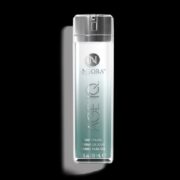Alcohol is a class of organic compounds formed by one or more hydroxyl groups (-OH), which are bound to the carbon atom of the hydrocarbon chain. Alcohols can be considered as a derivative of water in which one of the hydrogen atoms is replaced by the hydroxyl group.

Alcohols are the most popular organic compounds, and they have many applications such as perfume making, sweetener making. The two best-known alcohols are methanol and ethanol. Ethanol or ethyl alcohols are commonly used in the pharmaceutical industries, gasoline, toiletries, hospital instrument sterilisation and alcoholic beverages. Methanol is used as a solvent in the synthesis of (methanal) formaldehyde.
Most of the alcohols are colourless solids or liquids at room temperature. Low molecular weight alcohols are highly soluble in water, as their molecular weight increases water solubility decreases with increasing viscosity, density, boiling point and vapour pressure.
Classification Of Alcohols
Alcohols are classified as explained below according to the attachment of the hydroxyl groups in the hydrocarbon chain.
1. Primary Alcohols (10 Alcohols)
In a primary alcohols hydroxyl group (-OH) attached to the primary carbon atom. The carbon atom which is carrying a -OH group is attached to the one alkyl group of the hydrocarbon chain.
Example:
- Ethyl alcohol (ethanol) CH3 – CH2 – OH
- Butanol CH3 – CH2 – CH2 – CH2 – OH
- 2 – Methyl Propanol CH3 – CH(CH3) – CH2-OH
Note: Even though there is no alkyl group attached to the carbon atom which is bound to the hydroxyl group in the compound methanol, it is considered as primary alcohol.
Methanol CH3– OH
2. Secondary Alcohols (20 Alcohols)
In a secondary alcohols hydroxyl group (-OH) attached to the secondary carbon atom. The carbon atom which is carrying a -OH group is attached to the two alkyl groups of the hydrocarbon chain.
Examples:
- Isopropyl alcohol

- 2 – Butanol CH3 – CH(OH) – CH2 – CH3
- Pentan – 3-ol CH3 – CH2 – CH(OH) – CH2 – CH3
3. Tertiary Alcohol (30 Alcohols)
In a tertiary alcohols hydroxyl group (-OH) attached to the Tertiary carbon atom. The carbon atom which is attached to the hydroxyl group is directly bonded to three alkyl groups in the hydrocarbon chain.
Example:
- Tertiary butyl alcohol or 2-methylpropan-2-ol

- Tert-Amyl alcohol (TAA) or 2-methylbutan-2-ol

Synthesising Method Of Few Alcohols
1. Methanol
Methanol is produced when the carbon monoxide reacts with hydrogen in the presence of a catalyst at 50 to 100 atm pressure and 2500C temperature. During the process, the catalyst used is a mixture of copper and zinc oxide and alumina as support.
CO + 2H2 → CH3OH
2. Isopropyl Alcohols
Isopropyl alcohols are colourless, flammable and strong odour chemical compounds and it is an example for secondary alcohols.
It can be synthesised in the presence of a suitable catalyst when propene reacts with concentrated sulfuric acid followed by a hydrolysis process.
CH3 – CH = CH2 + H2SO4 → CH3 – CH(OSO3H) – CH3
CH3 – CH(OSO3H) – CH3 + H2O → CH3 – CH (OH) – CH3
Applications Of Alcohols
- Alcohols are used as beverages where ethanol per cent is 3 to 40.
- Ethanol is used as an antiseptic agent, anti-freezing agent.
- Methanol is used as a fuel.
- Few alcohols are used as a preservative in the laboratory.



